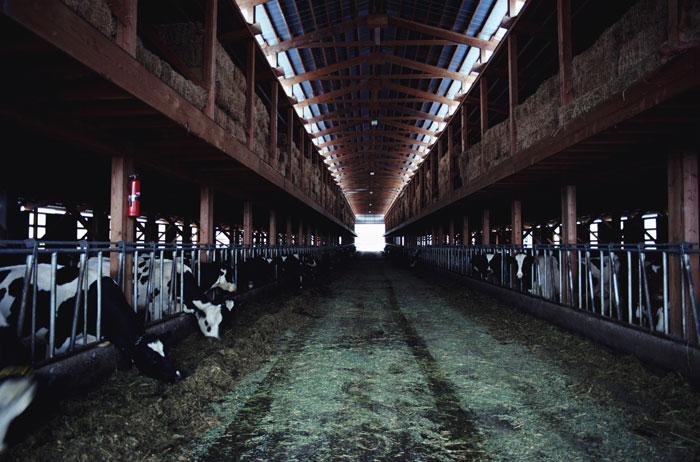August 6, 2016

Triticale, a cross between wheat and rye, may offer dairymen a feed option that produces more tonnage per acre than wheat—when cut for silage.
It’s an advantage they need with low milk prices.
Triticale has long been a popular winter grazing source for beef cattle. But more and more dairymen have discovered the benefits it provides their herds and overall production.
“We completely sold out (of triticale seed) last fall,” says Ron Kershen, Canyon, Texas. He is a breeder-marketer for Resource Seeds, a California-based company which recently was purchased by agribusiness giant Syngenta.
“Almost all of the seed went to dairy farmers and nearly all of it is being grown for silage. A lot of the sales were from us being the beneficiaries of coffee shop, or co-op-talk.”
Brent Bean, (former) Texas AgriLife Extension agronomist in Amarillo, says more dairymen want small grain silage, whether wheat or triticale. “We probably saw more go that way (in 2008) because the potential for a good grain crop looked minimal,” he says. “Also, they cut it for silage so they wouldn't have to keep watering it.”
Bean says producers are asking more questions about varieties and quality as well as tonnage. More test plots of both triticale and wheat varieties are being planted to compare strictly silage potential.
“Triticale silage is a good alternative to wheat silage,” says Bean. “In research conducted at one regional dairy with triticale and wheat under full irrigation, the triticale silage yielded 16 tons per acre. That compared to 13.1 tons per acre for wheat silage.”
The study included four triticale varieties and eight wheat varieties harvested at the boot-to-early-heading stage. Triticale's average in vitro true digestibility (IVTD) was 84.3 percent versus 83.8 percent for wheat.
25 PERCENT PRODUCTION ADVANTAGE
Kershen, who has been involved with triticale breeding, other research and marketing since the 1970s, says the 16-ton silage yield is typical for the forage. “It’s basically beating the tonnage for wheat silage by about 25 percent,” he says. “It yields 60 percent to 65 percent of what corn silage yields, but the cost of triticale is only 40 percent to 45 percent of that for corn silage.”
Like with wheat, the forage’s protein content varies with the amount of fertilizer used in production and its stage of growth at cutting. “At the flag stage, it’s about 18 percent protein,” says Kershen. “If you take it to soft dough, high quality triticale shows an increase in tonnage and energy, but gives up some protein. At that stage it’s about 11 percent protein and tonnage is increased by 20 percent.”
Bean says triticale growers need to work with dairies to find a compromise on when to harvest the crop, depending on the protein level they desire. “A producer may want to wait as long as possible to get more harvested tons,” he says, “but the dairy is looking for a higher protein content, which requires harvesting at an earlier stage.
PROTEIN PREMIUM
“I advise growers to try to get the dairy to pay on the protein amount. That's a fair way to do it. That's an incentive for producers to harvest earlier and get a premium.”
Ellen Jordan, Texas AgriLife Extension dairy specialist in Dallas, says dairy rations will likely have to be altered if dairymen feed triticale or wheat silage instead of corn silage. “Triticale probably lacks the energy value of corn or sorghum silage,” she says.
“Dairy producers may need to reduce other protein sources and look at the degradable and undegradable protein fractions in their rations. Since the silage is lower in energy, they may need to add additional corn or energy from a fat source.”
She says some dairymen make triticale into hay if they can't get it harvested early enough for silage. “It's then more apt to be fed in a dry cow or heifer ration,” she says.
Bean says dairy producers are seeking growers out because they want small grain silage, whether wheat or triticale.
Other benefits of triticale could be its need for less phosphorous. Research by University of Idaho Extension agronomist Brad Brown shows the combination of fall-planted triticale after summer-grown silage corn can take out about half as much phosphorus as silage corn alone.
Brown found that triticale withdrew an average 19 pounds of phosphorus/ acre, compared with 37 pounds for silage corn. He also learned that increasing triticale seeding rates by 50 percent maximizes forage yield and phosphorus removal.
Jordan says if growers use animal manure for fertilizer, they would likely want to remove some of the phosphorus from the soil to prevent a buildup.
About the Author(s)
You May Also Like




